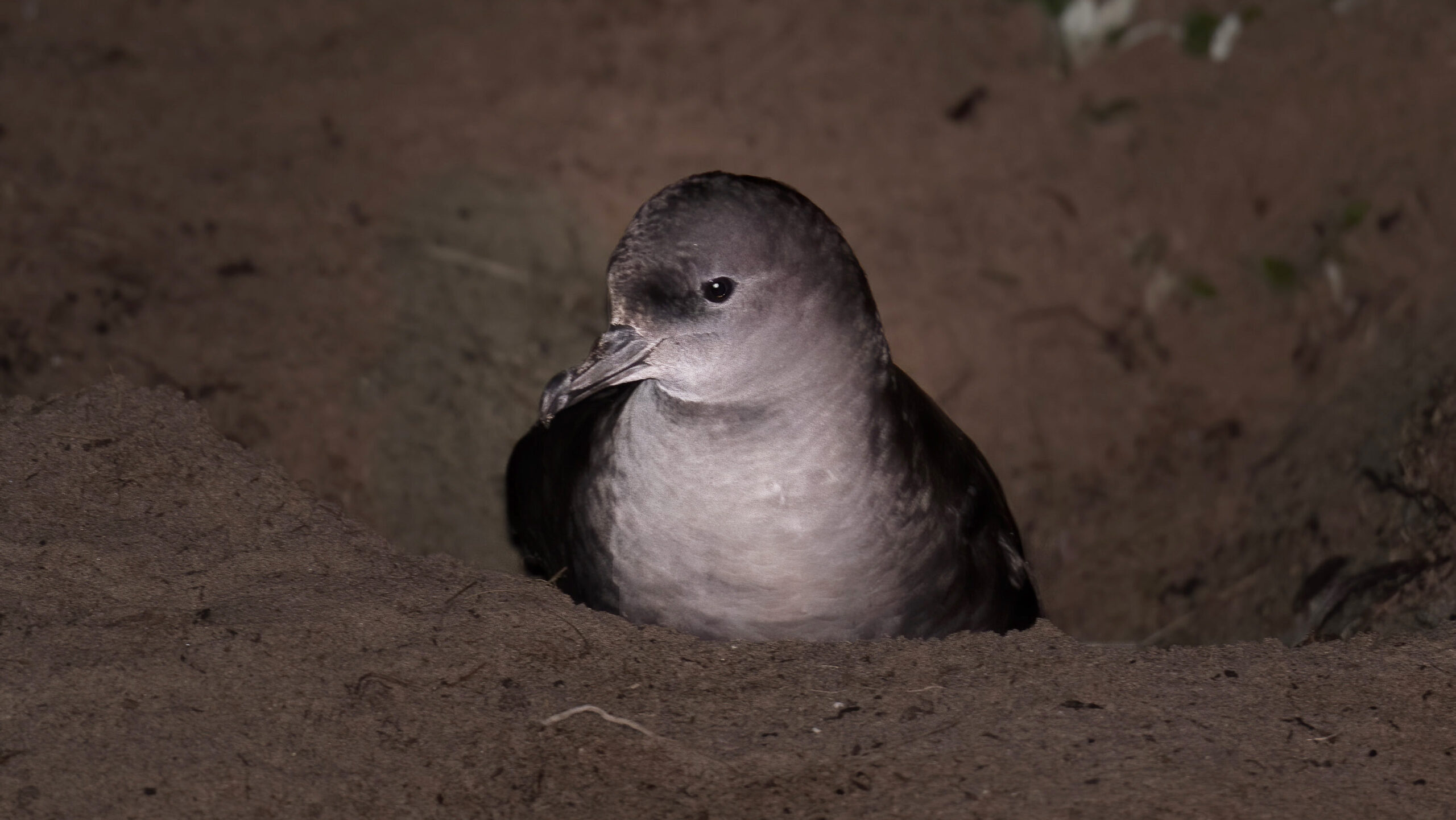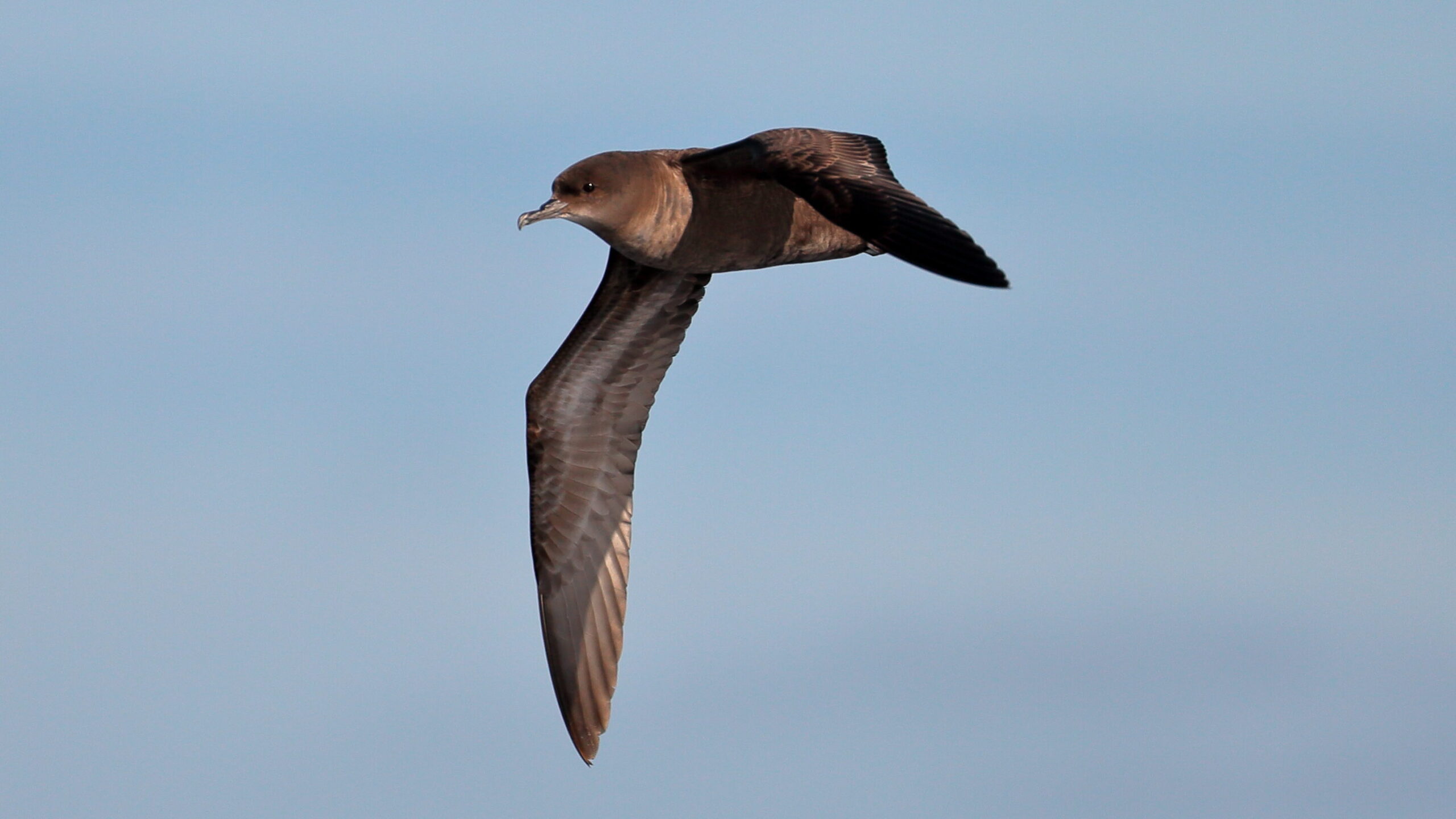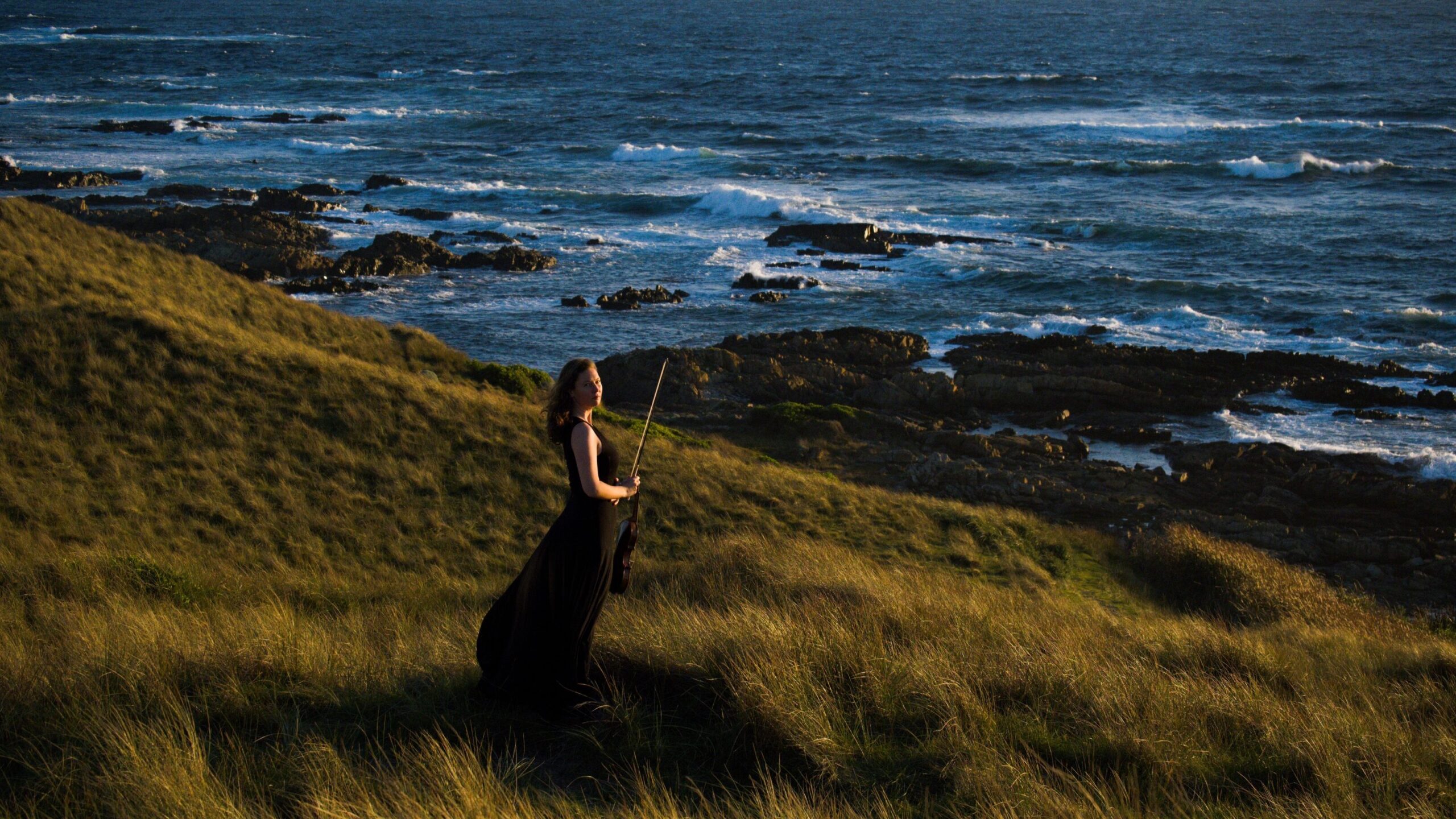Ever heard of a moonbird?

Chances are you’ve never heard of a moonbird, but the name certainly conjures images of an ethereal creature, perhaps worthy of a C. S. Lewis novel. You likely know of its more common names, muttonbird, or short-tailed shearwater, and you may have even seen them, or another shearwater species, on your local beach.
At first glance these brown birds don’t stand out from the flock, but when they take to the air they impress with their long, narrow wings that span a metre and make them quick gliders. After a day at sea, short-tailed shearwaters return to shore around dusk, hence the nickname “moonbird”.
Short-tailed shearwaters (the name we’ll use from here) also excite birdwatchers and scientists with their annual 30,000km migration, and the fact they return each time to the exact same burrow.
Short-tailed shearwaters and King Island
The migratory short-tailed shearwaters only breed in Australia, nesting in south-eastern Australia, primarily around Tasmania but as far north as Broughton Island in New South Wales. The islands of the often-treacherous Bass Strait are primary nesting grounds for the birds, with the remote, windswept King Island one of their largest breeding sites.
The birds breed between late September to late April, laying a single egg in December and fledging chicks in April. They then travel to the North Pacific Ocean, around Russia and Japan, to feed. When they arrive back in Australia, they return to their burrow to potentially face a number of challenges.

Tasmanian ornithologist Barry Baker estimates there are more than 20 million mature adults in Australia, but King Island Landcare Group conservationist Kate Ravich has major concerns about the species’ future. She says the birds experience predation from feral cats and habitat destruction, while a cultural tradition on King Island means the chicks are harvested by humans for consumption.
After 20 years of visiting and living on King Island, Kate has noticed a decline in the species’ population. “It’s hard to know how much harvesting is done,” she says. “There is a quota but I think there’s a lot of people who take no notice of that, and it’s quite a big quota anyway. The scientists say all is well. I don’t believe it is.”
Short-tailed shearwater challenges
The harvesting of short-tailed shearwater chicks when they’re fat and fluffy – a process known as muttonbirding – has been occurring in Australia for centuries, practised by both Europeans (mainly sealers) and First Nations people. Originally taken for their meat, feathers and oil, Barry says chicks are now killed primarily for food.
While the most recent assessment of the species – conducted in August 2018 – has them listed as “of least concern” on the IUCN Red List, non-commercial harvesting has been restricted to the period of 30 March to 14 April, 2024, for Bass Strait’s King Island, Hunter Islands and the Furneaux Group. There is also a quota of 25 on the number of birds people can take. All hunters must have a licence, and are prohibited from damaging burrows. But Kate says the restrictions don’t go far enough.
“It’s not necessary for us to do this, we’ve got plenty of food,” she says. “We really do have a responsibility for these birds, and I don’t believe that we are doing enough.” Kate would like to see the cessation of harvesting, as well as more research into the destruction of colonies by the island’s feral cats.

Currently, the Department of Natural Resources and Environment Tasmania (NRE Tas) carries out short-tailed shearwater surveys every December and March at a number of harvested colonies to assess trends in breeding bird numbers and breeding success.
“Survey results provide context to decisions regarding open seasons and bag limits for cultural harvest,” a department spokesperson says. “The department is increasing its focus on monitoring and research priorities to ensure sustainability of this important migratory species in Tasmania.” The spokesperson also says this year’s pre-season monitoring of colonies around Tasmania found chick numbers were above the long-term average, including on King Island.
Short-tailed shearwaters connection to King Island celebrated
With harvesting, predation, habitat loss, and the drowning of shearwaters in gillnets in the North Pacific Ocean, the health of the short-tailed shearwater population on King Island – and elsewhere – is worth keeping a close eye on. Helping draw attention to the species is Anthony Albrecht, an organiser of Moonbird Festival.
Moonbird Festival, to be held this year from April 13 to 21, is about connecting community with nature through art. Run by The Bowerbird Collective, of which Anthony is a co-founder, the event celebrates King Island and its wildlife with concerts, art exhibitions and artist talks.
“We think of moonbirds as a symbol of what is precious and easily lost. The Moonbird Festival is about celebrating beautiful things, community, and protecting our threatened species and remaining wilderness, especially on a place like King Island that has multiple critically endangered species and key biodiversity areas,” says Anthony.

The 2023 Moonbird Festival raised $20,000 for King Island Landcare Group, and proceeds will again be donated to help with moonbird conservation and other projects.
Anthony remains hopeful culture and conservation can come together to help short-tailed shearwaters and other troubled island species.
“I think there is a way to maintain cultural traditions while also increasing the community values around these birds as a precious part of our natural systems, that we can’t overharvest, we can’t clear their rookeries, we need to cherish their existence…”


